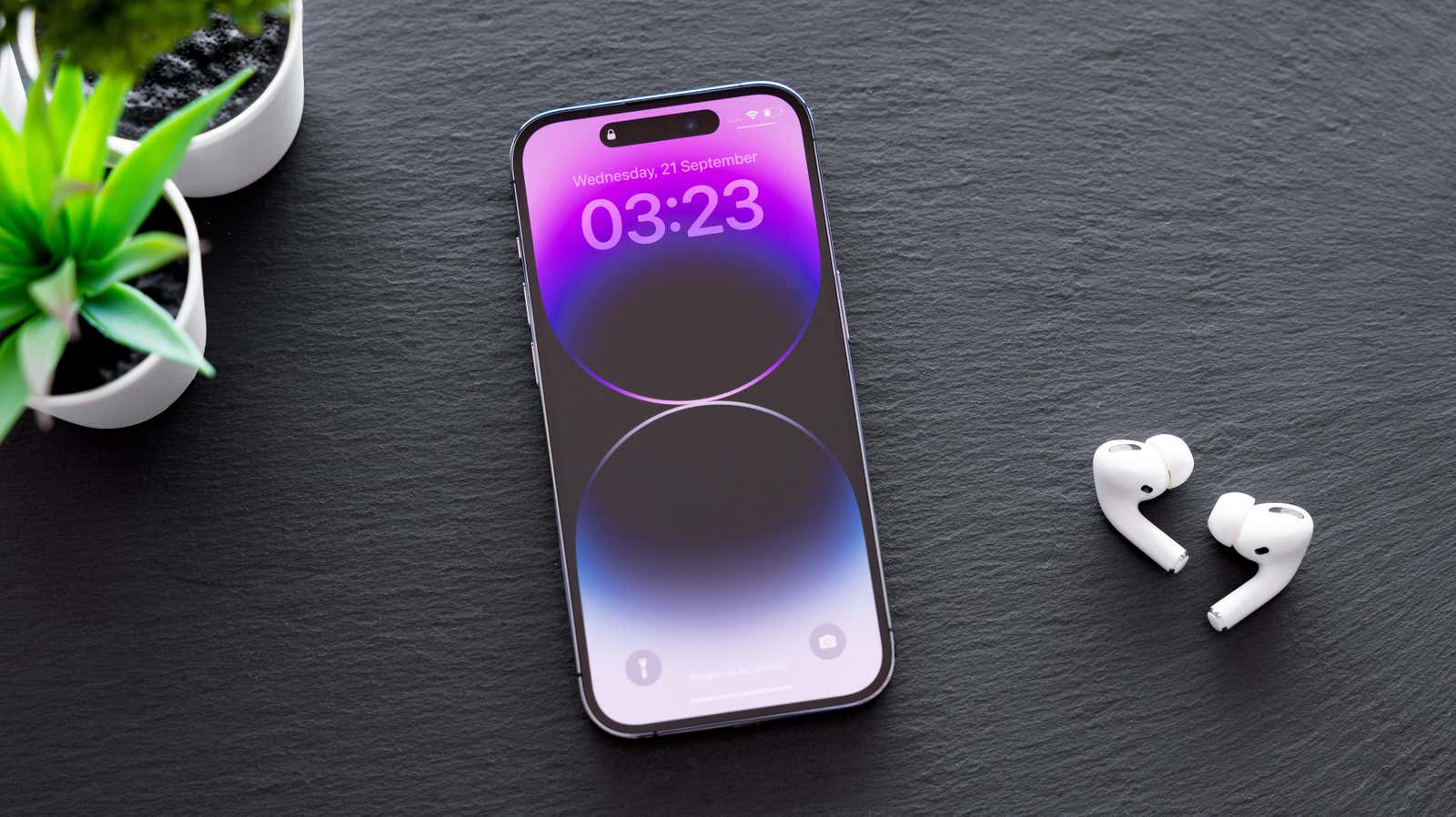You’re Wrong About Your IPhone’s Always-on Wallpapers Draining Your Battery

The new always-on displays on iPhone 14 Pro and iPhone 14 Pro Max provide a great way to keep an eye on your smartphone without interacting with it. However, Apple’s initial design choice was odd: By default, the 14 Pro dims your wallpaper in addition to the clock and notifications, which is both confusing and suggestive of battery drain.
Apple “fixed” the issue with iOS 16.2 by offering users the option to disable their wallpaper on AOD . Because the 14 Pro has an OLED display, it can turn off unused pixels. You would think that disabling the wallpaper for AOD, and thus leaving most of the screen black, would result in significant battery savings.
Well, apparently not. PhoneBuff recently ran a test comparing the battery performance of three iPhone 14 Pro Max: one with default AOD with wallpapers enabled, one with only text enabled, and one with AOD disabled. As an additional measure, PhoneBuff reset all phones to be free of apps and iCloud accounts, put them all on Airplane Mode, and set Lab to medium indoor lighting brightness as AOD automatically adjusts brightness based on lighting conditions.
After 24 hours, the iPhone with AOD wallpaper had 80% battery left, while surprisingly, the iPhone with text had only 84% battery left. After a full day, the wallpaper only drained the battery by 4% more, despite keeping the display on throughout the test.
The slight impact on battery levels is likely due to the impressive performance of Apple’s hardware and software. The iPhone 14 Pro displays have a variable refresh rate, which means they can change the number of times they refresh the information shown on the display. Older iPhones had a 60Hz refresh rate, which meant the display refreshed 60 times per second. The 14 Pro can boost up to 120Hz when you need fast, fluid movement, or up to 1Hz when idle. The latter is what power-efficient AOD delivers: you actually see the display refresh once per second, which, combined with the efficiency of Apple’s A16 Bionic chip, allows you to save the entire screen without much impact on your battery.
Of course, this was a controlled test in a lab, so your daily usage most likely won’t match that exactly. Since they used the iPhone 14 Pro Max for the test, you can also see increased battery consumption on the smaller iPhone 14 Pro. PhoneBuff also had to wake up the phones for the duration of the test, as AOD automatically turns off after an hour of inactivity. With that in mind, you can save more battery than you think by keeping your phone in your pocket or on your desk.
If all you want is to maximize your 14 Pro’s battery life, of course disable AOD completely – if you look at the PhoneBuff test, the 14 Pro Max without AOD enabled ended the 24-hour period with a 100% battery level. Golden Star. Again, this was achieved in a controlled environment with no cellular or Wi-Fi connections, apps updating in the background, etc. However, this shows that not using AOD at all saves a lot of battery life in the long run. . So if you want your 14 Pro or 14 Pro Max to last longer, consider toggling the toggle in Settings > Display & Brightness > Always On Display .
[ Macrumors ]